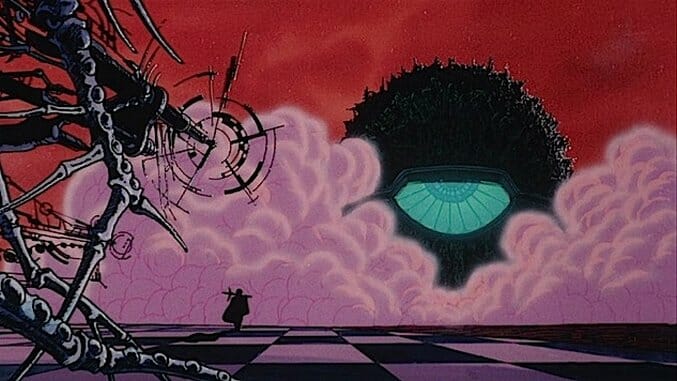
Mamoru Oshii’s name is enshrined in the canon of contemporary anime, his films, alongside those of Katsuhiro Otomo and Hayao Miyazaki, credited for cementing the genre’s status as a global cultural force at the height of the home video revolution. Oshii’s Ghost in the Shell (1995), a futuristic paramilitary drama turned techno-existential meditation, catapulted his name to the attention of anime fans and Hollywood directors alike, even as it as it became as important a part of the emerging cyberpunk canon as a CPU is to the function of a motherboard.
However, one consequence of Ghost in the Shell’s influence is that it overshadows all the other films by the director. In light of the renewed attention to Oshii’s film generated by the recent casting controversy of its American adaptation and his own recent self-admitted reticence to return to directing anime, this list is intended to offer curious filmgoers an overview of the many films of Mamoru Oshii.
(As a caveat, this list will consist only of films in which Oshii is credited as a director, not as writer or producer. As such, though they are not included, Jin-Roh: The Wolf Brigade and Blood: The Last Vampire remain highly recommended viewings in their own right, separate from their association to Oshii.)
10. Garm Wars: The Last Druid (2014)
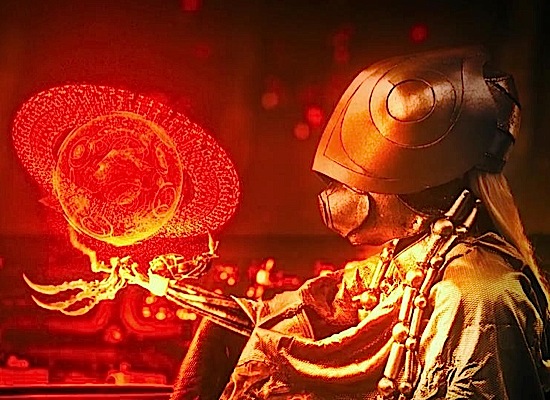
The last film in any ranking of a director’s body of work carries the unenviable burden of having to assert the legitimacy of its mention in spite of its shortcomings. So why is Garm Wars: The Last Druid on this list? Because despite its myriad faults—a convoluted backstory, incoherent plot and wanting character development—it remains a valuable primer of Oshii’s best-known themes and motifs on display, albeit at their least successful execution. Hyper-advanced military hardware that blurs the line between the technical and the fantastic? Check. Names and plot points derived from Judeo-Christian archetypes and myth? Check. Undecipherable technobabble pontificating alien esotericisms? Check. A basset hound inexplicably thrown into the middle of all this nonsense? But of course!
Garm Wars is, at the very least, intriguing on a visual level, though much of its CGI is blotted with oversaturated lighting, questionable composition, and an overall dated feel, resembling less a film made in the past decade and more like a Final Fantasy FMV circa 1998. To its credit, it occasionally satisfies in spite of these faults, conjuring imagery comparable to Gustav Klimt’s gilded art nouveau aesthetic infused with Oshii’s signature proclivity for wire-clotted futurism. Studded with breathless aerial dogfights, beachside sparring, and frenzied jungle warfare, Garm Wars is Oshii’s attempt to implement the principles of his anime in a live-action product to lackluster result. It aims high and lands wantingly low, but damn if it doesn’t look pretty while doing it.
9. Talking Head (1992)
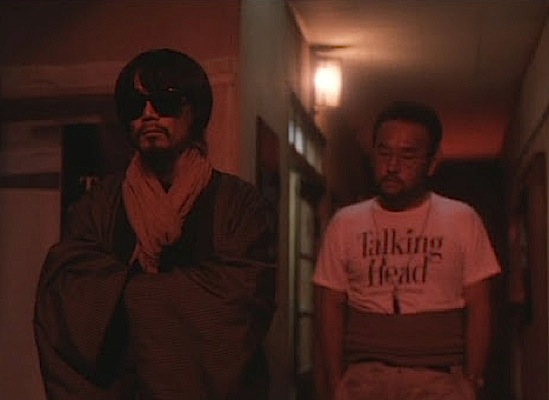
A post-modern art house murder mystery that doubles as a semi-autobiographical exploration of the Sisyphean challenges behind producing a film, Talking Head is one of the most bizarre and experimental films in Oshii’s career. After acclaimed anime director Rei Maruwa (Oshii’s pseudonym for contract work in the ’80s) inexplicably disappears in the midst of working on his latest genre-defying/defining film, Talking Head, a “migrant director” with the incredible ability to emulate any director’s style with precision is hired to see the film to completion, all the while preventing the film’s staff from being killed off by a shadowy conspirator.
Depending on the type of viewer you fancy yourself, Talking Head will either entertain or infuriate you. It’s inarguably one of Oshii’s most personal films, with the migrant director himself being an obvious symbolic stand-in for his own professional nomadism and many of the characters being named after Oshii’s professional colleagues and collaborators. As the sum total of many attributes—surreal, shoddy, subversive, introspective and nonsensical—situates the film in an odd position for appraisal. The film’s emulation of David Lynch’s style is unsurprising given how the famous avant-garde auteur has been cited as one of the director’s many western inspirations. The final installment in Oshii’s self-styled “Cinema Trilogy,” Talking Head is Roland Barthes’ Death of the Author filtered through the headspace of a working director to create a film that proudly relishes in its own absurdity.
8. Urusei Yatsura: Only You (1983)
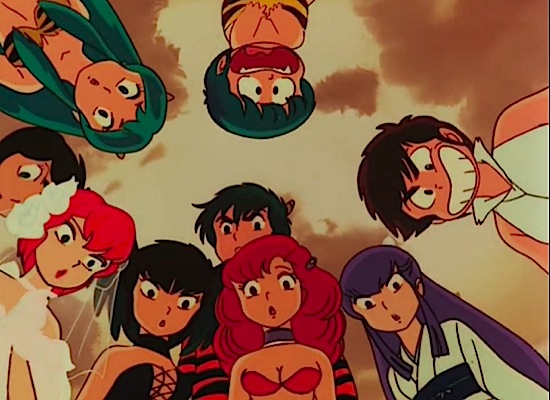
It may come as a shock to those who know him only for his politically charged, philosophical action dramas, but Oshii first cut his teeth as a director working on Studio Pierrot’s television adaptation of Rumiko Takahashi’s teen romance comedy series Urusei Yatsura and its first two feature-length films, Urusei Yatsura: Only One and Urusei Yatsura: Beautiful Dreamer. To its success as an adaptation and its detriment as a self-defined work, the film hews reverently to the formula of its source material’s premise. Ataru Moroboshi, a lecherous if well-meaning high-schooler who is betrothed to Lum, a leopard bikini-clad oni from outer space, is confronted with a mysterious new love interest in the form of Elle, an alien princess whose flirtatious wiles belie suspicious machinations intended for Ataru and his friends.
As Oshii’s first long-term project and his directorial debut, Urusei Yatsura would introduce him to his future long-time collaborators Kazunori Ito and Akemi Takada, the three of whom would later collaborate on their mutually career-defining series, Mobile Suit Patlabor. Peppered with the occasional impressive action sequence and a zany assortment of snowballing comedic scenarios, Only One is a film that suffers from a ponderous script, a grating soundtrack, and, to Oshii’s own admission, a superfluously overstuffed cast of characters included only at the behest of Takahashi’s demands. Only You is far from Oshii’s worst film, but the creative constraints of its production position it just short among his very best.
7. The Red Spectacles (1987)
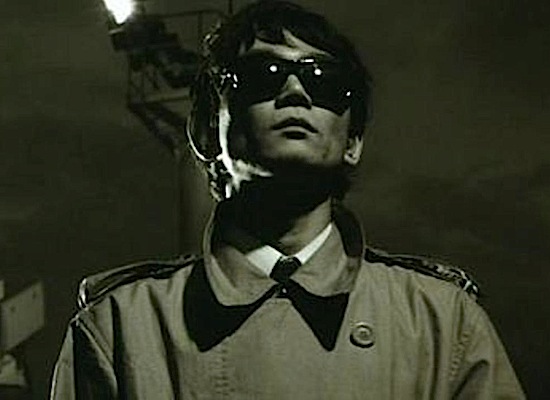
In 1984, Oshii left Studio Pierrot after the release of Beautiful Dreamer, the followup to his first Urusei Yatsura film, and struck out on his own as a freelance director. During this period between 1985 and 1989, Oshii was his own man. Unshackled from the restrictions of romantic comedy and free to set his sights on any project of his choosing, Oshii chose to adapt and direct one of his radio dramas into his first live-action film, The Red Spectacles, the first installment in what would later come to be known as his Kerberos Saga.
To say that The Red Spectacles is a peculiar film is an understatement. Set in an alternate modern Japan, The Kerberos Saga as a whole depicts the rise and fall of a martial law police unit in a post-WWII Japan that was defeated and occupied by Germany instead of the United States. Oshii leaves much of the social critique of Japan’s internal and foreign politics of peace in a post-war world on the cutting room floor, relegating this backstory to that of a mere backdrop on which to hang what can only be described as a psychological slapstick conspiracy thriller indebted to the works of French New Wave director Jean-Luc Godard. As philosophical as it is theatrical, The Red Spectacles is a tableau of competing genres combined to create a parody of modern dystopia.
6. The Sky Crawlers (2008)
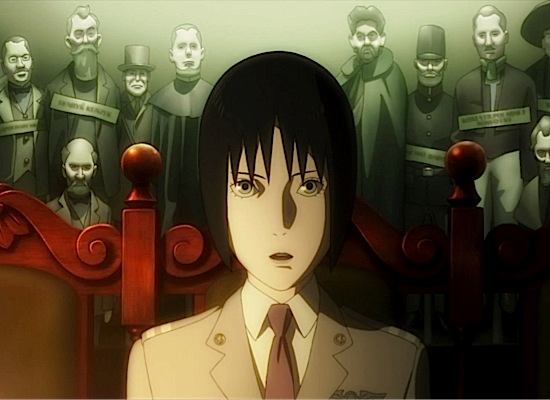
As Mamoru Oshii’s latest and, as of this writing, last animated feature, Sky Crawlers certainly merits recognition for being among his best. An adaptation of Hiroshi Mori’s original novel series, Sky Crawlers takes place in an alternate history in which the world exists in a state of relative peace, though at the cost of transforming war into a spectator sport where genetically modified child soldiers are bred to fight one another in aerial combat. Yuuichi Kannami is one of these such “Kildren” assigned to a new outpost who, while inquiring about the disappearance of his mysterious predecessor, begins to question his own nature and that of the world around him.
There’s something achingly pastoral about Sky Crawlers, each shot a sparsely composed mis en scene packed with profundity. In many ways resembling Kazuo Ishiguro’s Never Let Me Go, the film can be seen as a critique of the personal dissociative costs of scientific hubris and the unreliability of memory and perception, the latter being one of Oshii’s most frequently explored ideas.Though the film sports a number of harrowing aerial action sequences, Sky Crawlers couldn’t be further from a blockbuster. Instead, it’s a film that demands an audience’s patience and appraisal.
5. Patlabor: The Movie (1989)

Following his time with Studio Pierrot, Oshii drifted on his own through a small handful of independent and contract projects, such as a collaboration with Studio Ghibli that was later abandoned in pre-production and his aforementioned film The Red Spectacles. Following that film’s release, Oshii was approached by Kazunori Ito to join the independent production collective Headgear to direct their first collaborative project, Mobile Police Patlabor.
To have the man tell you himself: “In retrospect, Patlabor for me was a major film in many ways [in that] it became my turning point. I know that I am what I am today because of Patlabor.” Oshii’s work on the franchise’s first film would yield many early defining moments of his career. From his shift from fantasy to hard science fiction, to the start of what would be his lasting relationship with animation studio Production I.G., Patlabor proved to be his first true opportunity through which to explore and express his take on the intersections of history, politics and culture in a post-WWII Japan. Patlabor: The Movie is perhaps the most palatable of Oshii’s films to start with for first-timers otherwise unfamiliar with his non-Ghost in the Shell-related work, containing the motifs and elements that would shape his legacy while remaining light-hearted and pop enough to court viewers looking for something that thematically punches just a bit higher above that which most other mecha anime aspire.
4. Avalon (2001)
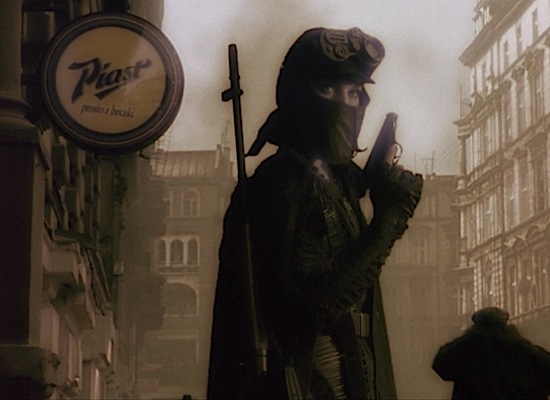
Avalon is perhaps Oshii’s most well-known live-action film and arguably his best. Breaking Oshii’s five-year directorial hiatus following the release of Ghost in the Shell, Avalon was significant not only for it being the final collaboration with his then long-time screenwriting partner Kazunori Ito, but for being the first of Oshii’s live-action films produced in the wake of The Matrix’s meteoric rise and pop cultural enshrinement, a film whose makers which avidly cited Oshii’s Ghost in The Shell as a direct inspiration. Though Oshii claims the concept of Avalon was conceived years before The Matrix’s own, its imagery and execution appears to hold as much regard for the precedent of the Wachowskis as their own film does to that of Oshii’s.
Ash is a professional player of Avalon, an illegal virtual reality war simulator where players compete for points and recognition that translate into real-life funds and incentives. After hearing rumors of an advanced level hidden within the game’s deepest recesses, Ash embarks in search of it even as the lines that separate Avalon and the world of which she assumes is real are blurred. Avalon’s aesthetic is a confluence of the defining characteristics of Oshii’s most formative inspirations, emulating the copper-sepia palette of Tarkovsky’s Stalker and the sensory-amplifying technology of Marker’s La Jetée, while striking the same note of reality-splintering paranoia as Cronenberg’s ExistenZ. Thematically reconfiguring Arthurian lore and Norse myth into the sci-fi narrative apparatus of a Polish cyberpunk world, Avalon is a product of Oshii at his best.
3. Urusei Yatsura 2: Beautiful Dreamer (1984)
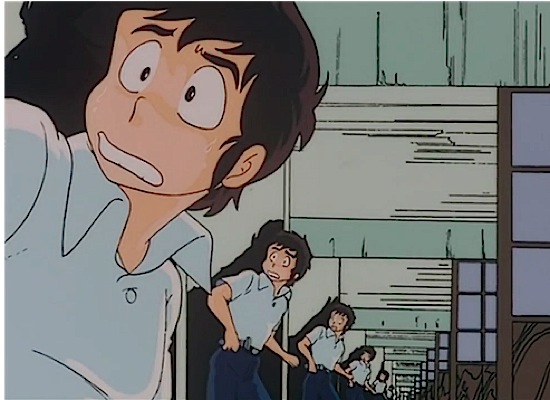
The direct sequel to Urusei Yatsura: Only One, Beautiful Dreamer is one of Oshii’s most infamous films, prioritizing heady philosophical explorations on the nature of time, desire and human perception above standard teenage comedy to the disdain of diehard Urusei Yatsura fans and the recognition of his admirers. It is, in short, the film that Oshii needed to make in order to set himself on the path of the director he would later become. Beautiful Dreamer follows what is an otherwise typical day in the life of Ataru and his friends, as they scramble to finish preparations for Tomobiki High School’s impending annual school festival. It’s not long before they notice that something odd is going in town, with every passing day feeling as though it is a repeat of the previous. Ataru, Lum, and the others are forced confront and escape the nature of this mysterious temporal loop, all while entertaining the question of whether such a life as this is disfavorable at all.
If Urusei Yatsura: Only One was the film that Oshii needed to produce in order to learn how to work within the constraints of a pre-existing property, then Beautiful Dreamer was his first successful effort in exerting himself from out of the limitations inherent of said property. Whether Beautiful Dreamer scratches your particular itch is entirely dependent on how invested you are to the series’ pre-established tone. Above all, it is remembered chiefly for its mesmerizing imagery, beautifully composed shots and for maturing the character of Ataru Moroboshi through one of the series’ most touching moments during the film’s climax. It’s the best of all possible send-offs that Oshii could have delivered for the series that gave him his first big break, a film that is unquestionably and unapologetically all his own.
2. Angel’s Egg (1985)
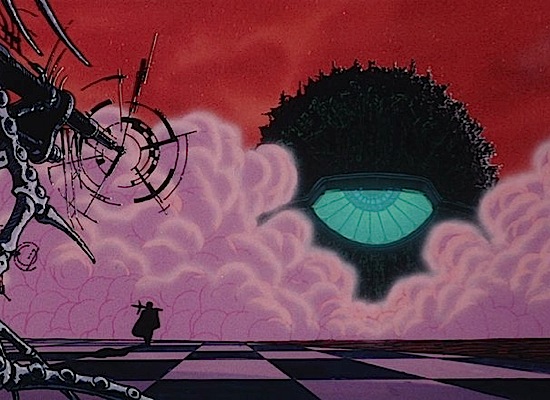
A young man, bearing a cross-shaped staff on his shoulder, stands on a checkered beach beside what looks to be an alien antenna array. A massive eye-shaped vessel descends from on high, decorated with stone statues, their hands clasped in prayer, before touching ground in a hissing flash of smoke and thunder from a distance. A pale-faced girl wanders alone through a dark forest of barren trees and derelict ruins, clutching a large egg beneath the folds of her dress. There is nothing else quite like Angel’s Egg.
Much in the way that Peter Chung’s Aeon Flux was a reactionary work to his creatively stultifying time working on Rugrats, Angel’s Egg is nothing short of a refutation of everything that Oshii had come to be known for during his time working with Pierrot. Where Urusei Yatsura was upbeat, Angel’s Egg is fatalistic. Where the former is a romp through the pleasures of youth, the latter is a funeral procession to nothing short of the very death of faith itself. Rumor has it that Oshii experienced his own crisis of faith while attending seminary in hopes of becoming a priest, and this in turn influenced much of the film’s production. Angel’s Egg is less an anime than it is a living portrait, with Yoshitaka Amano’s evocative designs deserving much of the credit for elevating the film to an enduring cult status, complementing Oshii’s deft compositions and pacing to create something that oozes with portent and a vague yet unmistakable atmosphere of menace.
1. Patlabor 2: The Movie (1993)
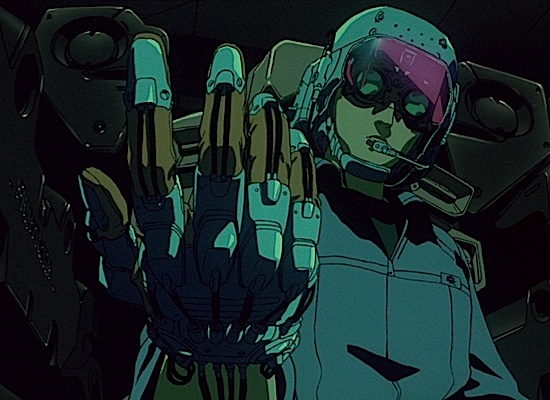
Were it not for Patlabor 2, Ghost in the Shell would not be the film that it is today. ;Patlabor 2 is a proof-of-concept for the aesthetic and cinematic nuances that would come to fruition in his magnum opus, securing international acclaim for Oshii’s status as a director. His penchant for night-time interior car sequences, modern industrial cityscapes picturesquely framed through the reflection of tremulous pools of water or refracted panes of glass, and long-take montages absent of diegetic sound, punctuated only by the inimitable melancholic scoring of Kenji Kawai. All the traits that would distinguish Ghost in the Shell first came together in Oshii’s work on Patlabor 2.
Set three years after the events of the first film, Patlabor 2’s premise diverges sharply from the tone and feel of its predecessor. Gone is the lighthearted, can-do sleuthing of the original, replaced instead with an sober aura of moral relativism and philosophical ennui. A straight-faced military political thriller, Patlabor 2’s focuses on the status of Japan’s attitude of peace as a sovereign nation dissolved of its standing military in the wake of WWII. Furthermore, the film centers on topics such as domestic terrorism, the collusion of political corruption, and the moral conundrum of what it means to work in service of protecting a time of “unjust peace” sustained by a so-called “just” war—themes that resonant as sharply with our world today as they did back in 1993. Patlabor 2 is a masterpiece of mature, animated filmmaking worthy of recognition apart from its role as the thematic and aesthetic forbear to Oshii’s magnum opus.
Toussaint Egan is a culturally omnivorous writer who has written for several publications such as Kill Screen, Playboy, Mental Floss, and Paste. Give him a shout on Twitter.